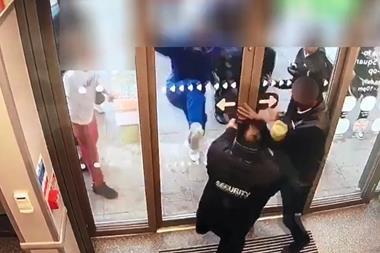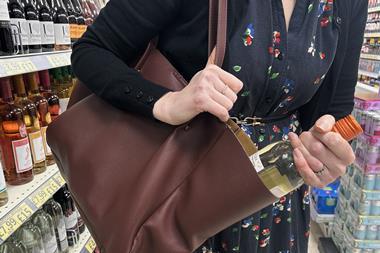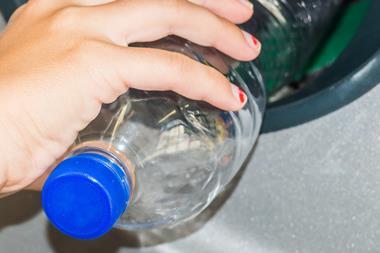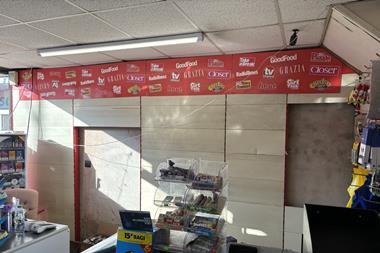Sudden Cardiac Arrest is one of the biggest killers in the UK, but local shops can help improve survival rates by installing a defibrillator
C-store owners may often think they provide an emergency service when distressed shoppers arrive in desperate need of loo roll or a pint of milk, but there are situations when they really could mean the difference between life and death.
Spar Gorseinon Swansea proved just that last year when a man in his 60s suffered a sudden cardiac arrest three doors down from the store, outside the Indian restaurant. Fortunately, the store had a defibrillator - a portable appliance that analyses heart rhythm and, if needed, administers an electrical charge to establish a regular heartbeat. Three on-call firefighters in the restaurant spotted the incident. Store manager Paul Davies recalls: “The men ran to the store to get the defib. They saved his life. He would have died without it.”
Paul says there are signs on the store door explaining that the store has the machine, ready for such an emergency. “It’s kept behind the tills, and everyone knows it is here,” he says.
Staff raised £1,000 to pay for the Automated External Defibrillator (AED) through raffles and fundraising activities almost nine years ago. They used a local company called Cariad (a Welsh charitable organisation) to supply it and advise on where to put it.
Paul says it’s been really valuable to the community - in the time he has had the machine it has had to be used three times.
Free app
St John Ambulance has a free app providing easy-to-follow advice on a range of first aid scenarios, including how to cary out CPR, diabetic emergencies, choking and allergic reactions. It is available for Android, BlackBerry and iPhone mobile devices.
There are more than 30,000 out-of-hospital cardiac arrests in the UK each year and every minute without cardiopulmonary resuscitation (CPR) and defibrillation reduces the chance of survival by up to 10% (British Heart Foundation). Defibrillation within three minutes increases the chance of survival to more than 70% (Heartsafe). With every second counting, more and more c-stores across the UK are showing their community spirit by installing defibrillators in or outside their store. Stores’ long opening hours or rural locations make them ideal hosts, but for many store owners paying for and installing a defibrillator is also the perfect way to show how the local store is an integral part of community life.
Pippa Heritage, who owns Barns Green Village Stores in West Sussex with husband David, was prompted into getting a defibrillator after a customer died following a cardiac arrest one Christmastime. “I came from a nursing background and it was something I really wanted to do. We got it in 2011 and raised the money for it ourselves,” she explains.
“We decided to hire the village hall and hold a ‘Defib Do’. We decorated the hall with balloons, a local band provided music and locals bought tickets to come, and we ran an auction. We held it on the weekend after Valentine’s Day. We set a target of £2,000 and actually raised £5,000.”
Next steps
After raising the cash, Pippa researched providers, ending up linking with the local Community First Responders team, who advised her. The defibrillator is housed in a box outside the store, and is very easy to use. “You simply dial 999 and they provide a code to open the box and the machine talks you through how to use it. So far, touch wood, it hasn’t had to be used,” she explains.
She believes it’s a great addition to the store. “I think the defibrillators are a brilliant idea, especially since services are so stretched these days and it takes so long to get anywhere. Doing something like this brings the whole community together.”
Spar Llanharry is expecting its defibrillator to be fitted this month after two staff members raised £1,900 to fund two machines for the Welsh village. Supervisor Joanne Pullman and head of food to go Rachel Boyland rallied locals after Rachel attended a first aid course and found out just how vital the machine can be and saw how it could benefit her community.
The pair held discos in the local club and even went knocking on doors selling raffle tickets to gather together the money needed. “It’s amazing how people get behind you. We’ve received lots of support from the community,” says Joanne. “The machine will go at the front of the store, where everyone can see it, and another is being put at the football club.”
The store worked with Welsh Hearts, a heart charity for Wales, which organised training for everyone in the village on how to use the machine and how to carry out CPR. “The training itself was a real eye-opener as it gave us an idea of how we could be called on to use it in a real situation,” says Joanne.
Along with the community benefiting, the store itself received a valuable boost of positive publicity after Joanne and the store posted about the fundraising efforts on Facebook and Twitter, and local politicians including Welsh Assembly member Huw Irranca-Davies and Chris Elmore MP visited the store to hand over the defibrillator.
Central England Co-operative has putting defibrillators across its Food stores, with the aim of eventually seeing the devices in place at nearly all of the Society’s trading outlets across 16 counties. So far 200 devices across stores and funeral homes have been added.
A wholesaler response
Spar wholesaler Hendersons is on a mission to create the largest network of publically-available defibrillators across Northern Ireland.
More than 300 Spar, Vivo and Eurospar stores have pledged to take part in the Heart of the Community campaign and raise the £1,500 needed to install the devices.
An educational programme is running alongside the installations to increase awareness, including a ‘how to’ video as well as printed material available in stores.
McBride’s Spar was one of the first to get involved and has installed nine defibrillators in its 11 stores so far.
The project has been funded by money raised from the 5p carrier bag levy. Says corporate responsibility manager Hannah Gallimore: “We have been able to use the money to put in place devices that could save lives right in the centre of our communities.”
The business is working with ambulance services to identify the most suitable sites for equipment. Where possible these are in external locations, allowing them to be used at any time, day or night. Central England Co-operative chief executive Martyn Cheatle believes it’s a worthy investment. “Sudden cardiac arrest is one of the UK’s biggest killers and, after listening to the concerns of customers, members and partners, we want to help tackle the issue by getting more life-saving equipment into communities where it can save lives.
“As a responsible business we place a huge focus on making a positive contribution to the communities in which we trade.”
Every installation has included familiarisation sessions for staff, nearby businesses, local residents and community groups.
Once the cabinet and AED have been installed, running costs are minimal, according to AED provider Heartsafe. The cabinet requires a miniscule amount of electricity to power the internal light (which is only activated when the cabinet door is opened), thermostat and heater (to control the temperature of cabinet in cold weather). The cabinet needs a 240V mains electrical supply to run the thermostat, heater and lighting, costing just a few pounds per year.
AEDs will need some maintenance, as components will need replacing periodically, or when they’ve been used. The frequency and cost depending on the make and model of AED, Heartsafe says.
The battery life of most AEDs generally lasts between three and five years, or for a certain number of deployments. The electrode pads generally have a shelf life of two to three years, at which point they will need to be replaced even if they haven’t been used.
Take advice
If you’re thinking of raising funds for an AED, the British Heart Foundation suggests talking to your local NHS ambulance service first for advice about where exactly to place one and which kind to buy. Notify your ambulance service, too, as that way 999 operators can quickly identify a nearby device in future emergencies.
Although the devices usually have visual prompts and talk the user through how to use them, the British Heart Foundation believes it’s vital as many people as possible in the store are trained in how to use them, to ensure they are deployed as fast as possible.
Defibrillators don’t cost the earth - prices start from about £1,000 - but making one available in your store could turn out to be a lifesaver, and there’s surely no greater investment than that.
In an emergency
Signs of a heart attack and cardiac arrest
Cardiac arrest and a heart attack are different, but both mean you should dial 999 for an ambulance immediately.
Cardiac arrest
- Signs and symptoms suggesting a person has gone into cardiac arrest include:
- They appear not to be breathing
- They’re not moving
- They don’t respond to any stimulation, such as being touched or spoken to
- If you think somebody has gone into cardiac arrest use a defibrillator if you have access to one. Perform chest compressions to restart the heart.
Heart attack
A heart attack happens when there is a sudden loss of blood flow to a part of the heart muscle. Most heart attacks are caused by coronary heart disease.
Symptoms of a heart attack can include:
- Chest pain - a sensation of pressure, tightness or squeezing in the centre of the chest
- Pain in other parts of the body - it can feel as if the pain is travelling from chest to arms (usually the left arm is affected, but it can affect both arms), jaw, neck, back and abdomen
- Feeling lightheaded or dizzy
- Sweating
- Shortness of breath
- Feeling sick (nausea) or being sick (vomiting)
- An overwhelming sense of anxiety (similar to having a panic attack)
- Coughing or wheezing.
Although the chest pain is often severe, some people may only experience minor pain, similar to indigestion. In some cases, there may not be any chest pain at all, especially in women, the elderly and people with diabetes.
It’s the overall pattern of symptoms that helps to determine whether someone is having a heart attack.
How to carry out chest compressions
To carry out a chest compression on an adult:
- Place the heel of your hand on the breastbone at the centre of the person’s chest.
- Place your other hand on top of your first hand and interlock your fingers.
- Using your body weight (not just your arms), press straight down by 5-6cm on their chest.
- Repeat this until an ambulance arrives.
- Aim to do the chest compressions at a rate of 100-120 compressions a minute.
Source: NHS Choices





















No comments yet